Productivity is 3 times higher than the world
Coffee is the main crop of the Central Highlands and Northwest and is classified as a major crop, with an area of about 730,000 hectares, an annual output of about 1.8 million tons. Vietnamese coffee has grown strongly since 1980 thanks to being mainly grown on basalt soil and at a very suitable altitude. In addition, the climate and weather conditions; especially the rainfall and temperature in the growing areas are also suitable for coffee trees to grow.

Vietnam's average coffee yield is about 3 tons of beans/ha, 3 times higher than the world average. Photo: PC.
According to Dr. Phan Viet Ha, Deputy Director in charge of the Western Highlands Agriculture and Forestry Science Institute (WASI), the long dry season in coffee growing areas is a challenge in terms of irrigation water, however, this is also a condition that helps coffee plants differentiate flower buds well and evenly, a factor to achieve high productivity. In many areas, such as the Buon Ma Thuot plateau, the temperature range between day and night is high, helping coffee plants accumulate better aromatic substances, which is a premise for developing high-quality coffee.
According to Dr. Phan Viet Ha, the coffee industry has achieved its current success thanks to many support policies from the State, which has given it the opportunity to develop. Since the 1980s (20th century), coffee trees have grown strongly under state-owned farms and the construction of new economic zones in the Central Highlands. This is the foundation for coffee trees to develop as they are today. At the same time, the State always has policies to support development in planning, scientific and technological research, agricultural extension and transfer of technical advances, and sustainable development for the coffee industry. Recently, the coffee replanting program has been of great significance for the industry to have dramatic changes in productivity and quality.
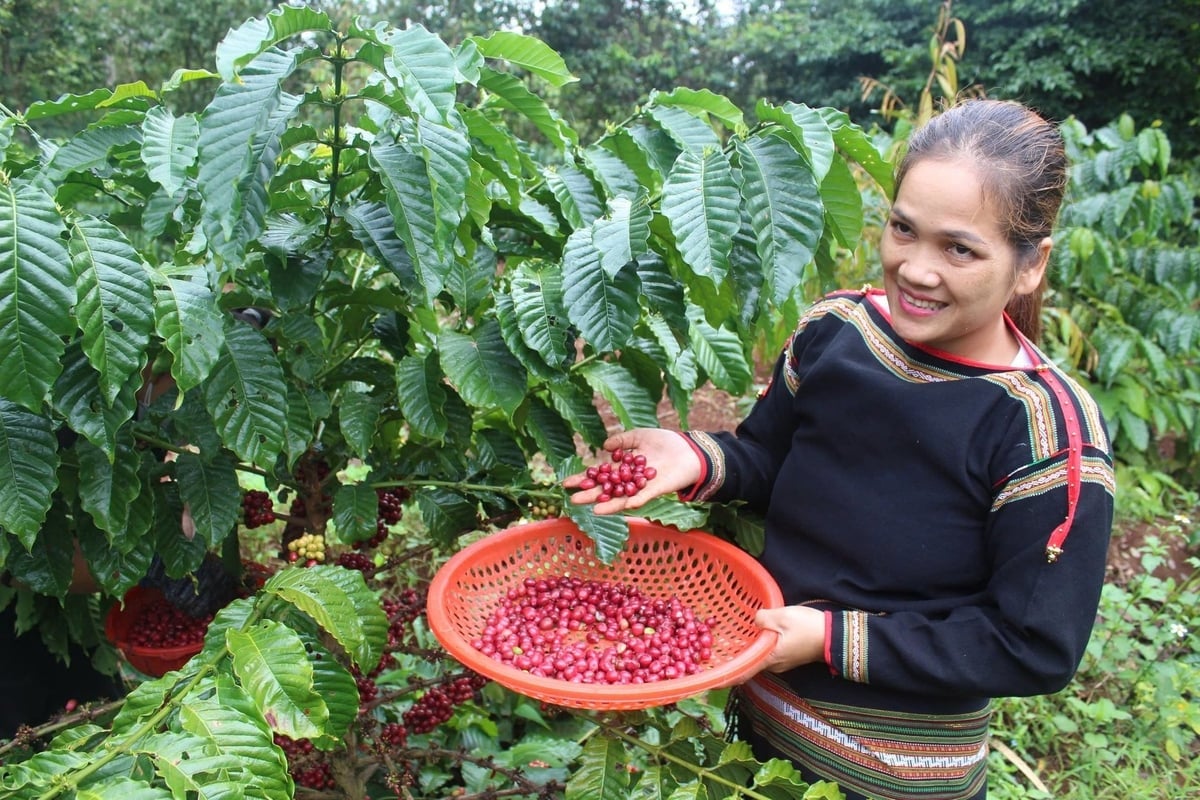
Vietnam's coffee industry is the main livelihood for more than 600,000 farming households with about 2 million workers. Photo: PC.
“Currently, the average yield of Vietnamese coffee is about 3 tons of beans/ha, 3 times higher than the world average, nearly double that of Brazil, the world's number 1 coffee producer. Vietnamese coffee products are present in the markets of 85 countries,” said Dr. Phan Viet Ha.
In addition, farmers have a good grasp of coffee cultivation techniques; a widespread agricultural extension network combined with the industrious, hard-working and studious nature of Vietnamese farmers has made coffee cultivation techniques enter the "blood and flesh" of farmers, thanks to which coffee trees give high productivity and good quality.
“In addition, the presence of the WASI Institute with comprehensive research on coffee plants has also greatly supported production,” Dr. Ha said, adding that due to climate change, the area suitable for growing Arabica coffee (tea coffee) in the world is gradually shrinking; meanwhile, high-quality Robusta coffee is Vietnam’s strength, this type of coffee is very necessary for processing instant coffee and blended coffee. At that time, high-quality Robusta coffee, with its wide adaptability, will become popular.
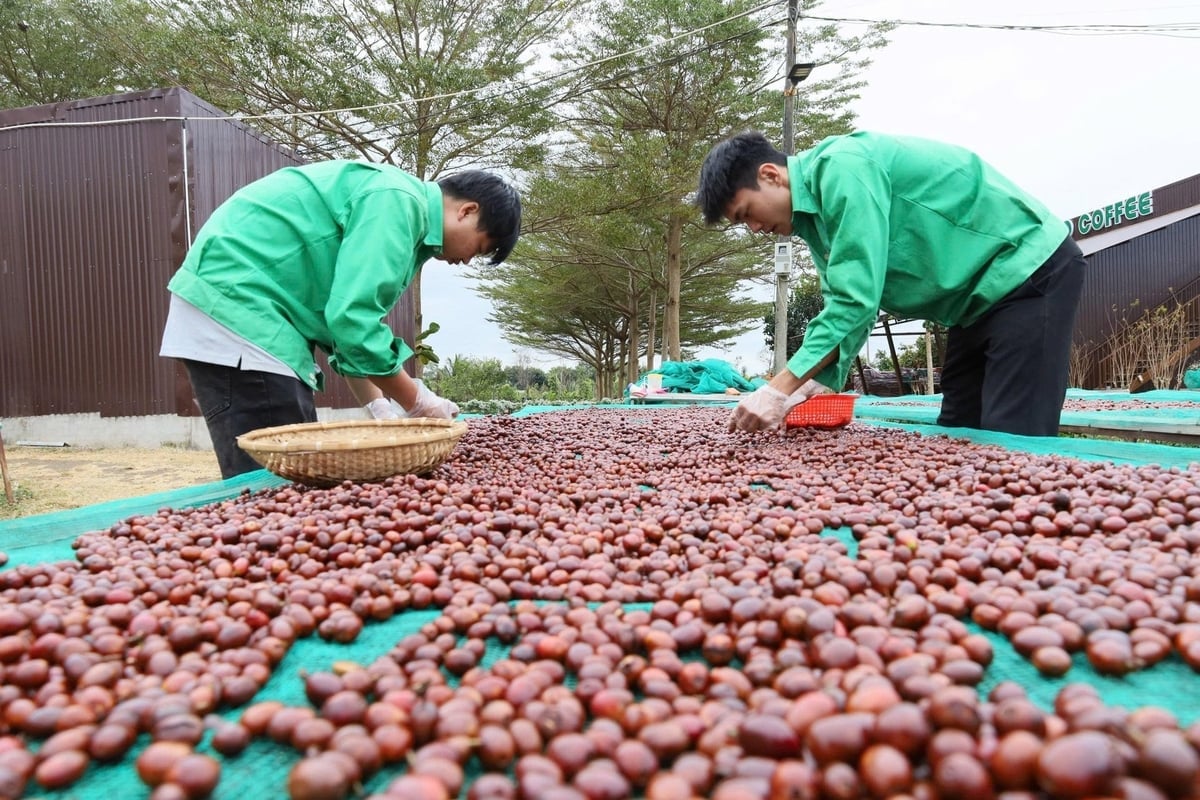
Currently, Vietnam is the second largest coffee exporter in the world, after Brazil. Photo: PC.
The achievements of the Vietnamese coffee industry in recent years are extremely impressive in terms of numbers: Vietnam is the second largest coffee exporter in the world, after Brazil, and is the world leader in Robusta coffee production.
Coffee has always been a product that brings high export value among Vietnam's agricultural export products. In the 2024-2025 crop year, Vietnam achieved a record export turnover of 8.4 billion USD, an increase of 55.5% in value compared to the previous crop year with an export output of about 1.5 million tons. In addition, the Vietnamese coffee industry is the main livelihood for more than 600,000 farming households with about 2 million workers, contributing to the socio-economic development in the Central Highlands, Northwest and some other coffee growing regions.
Breeding achievements
For the Vietnamese coffee industry to have the world's highest productivity and the world's second-highest export, we must mention the achievements in new varieties put into production. According to Dr. Phan Viet Ha, the achievements in scientific research and technology in coffee breeding of WASI have been transferred to farmers in the past 20 years, contributing to the development of this crop. WASI has 20 coffee varieties recognized for production, including: 14 Robusta coffee varieties and 6 Arabica coffee varieties.
Among the Robusta coffee varieties produced, the TRS1 Robusta coffee variety is the most popular and widely grown by farmers (accounting for about 85%); followed by the grafted Robusta coffee varieties TR4, TR9, TR11, vine coffee, and dwarf green coffee (accounting for about 15%). Among the Arabica coffee varieties, the Catimor Arabica coffee variety is widely grown in production; although the newly hybridized Arabica coffee varieties such as TN1, TN2, THA1 have high productivity and quality, the planting area is still small.
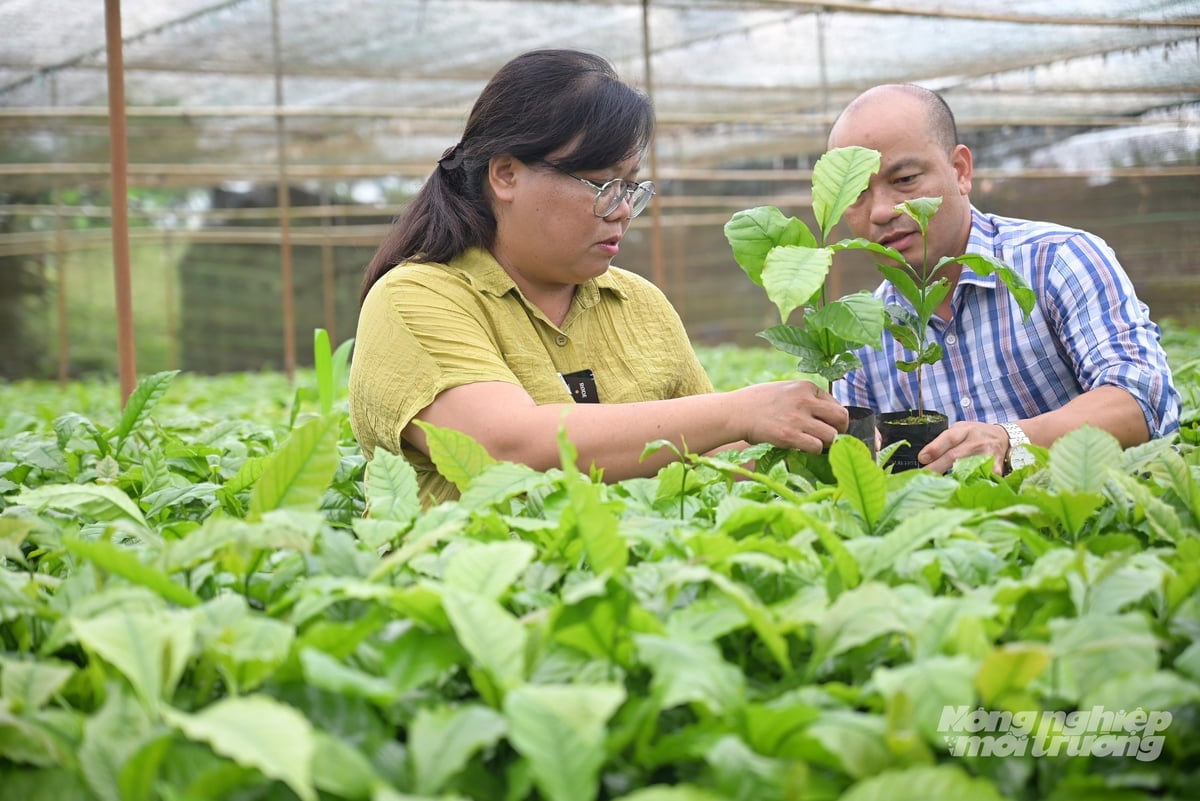
TRS1 Robusta coffee variety is a popular variety for replanting today. Photo: Phuong Chi.
Dr. Ha added: The TRS1 coffee variety and the grafted coffee varieties TR4, TR9, TR11 achieve actual productivity in the stable business phase of 4-5 tons of beans/ha, with some households achieving 7-8 tons of beans/ha due to good care conditions. In addition, WASI has researched, perfected and transferred technical advances in cultivation, plant protection, harvesting and processing to farmers for production, ensuring the full application of technical packages according to different development orientations, towards sustainable development.
Currently, the proportion of deeply processed coffee in Vietnam (roasted coffee, instant coffee) is increasing. Many large-scale, modern processing factories have been invested in, helping to increase the added value of coffee beans, instead of just exporting raw. In addition, programs to develop high-quality coffee and specialty coffee are also being strongly developed, further contributing to enhancing the reputation and position of Vietnamese coffee.
5 solutions for the coffee industry to make a breakthrough
However, climate change is a big challenge for Vietnamese coffee trees. Drought and lack of irrigation water in the dry season are increasingly severe; in addition, unseasonal rains also affect the flowering, fruit setting, harvesting and product preservation of coffee production. In addition, the area of old coffee trees is still quite large; small-scale production; increasingly strict market standards; and products still heavily dependent on raw exports are the problems that the coffee industry is facing.
For the coffee industry to develop sustainably and make a breakthrough in the coming time, according to Dr. Phan Viet Ha, Vietnam needs to speed up the process of replanting old coffee gardens, and must use new varieties with high productivity, quality, and the ability to adapt and withstand adverse conditions. The most important thing is to gradually switch from intensive farming to sustainable farming such as: intercropping with durian, pepper, fruit trees... applying water-saving irrigation, drip irrigation, localized rain spraying and integrated pest management (IPM). "In particular, applying new technologies of precision agriculture and smart agriculture to reduce production costs, reduce the impact on land and water resources and reduce emissions," Dr. Ha shared.
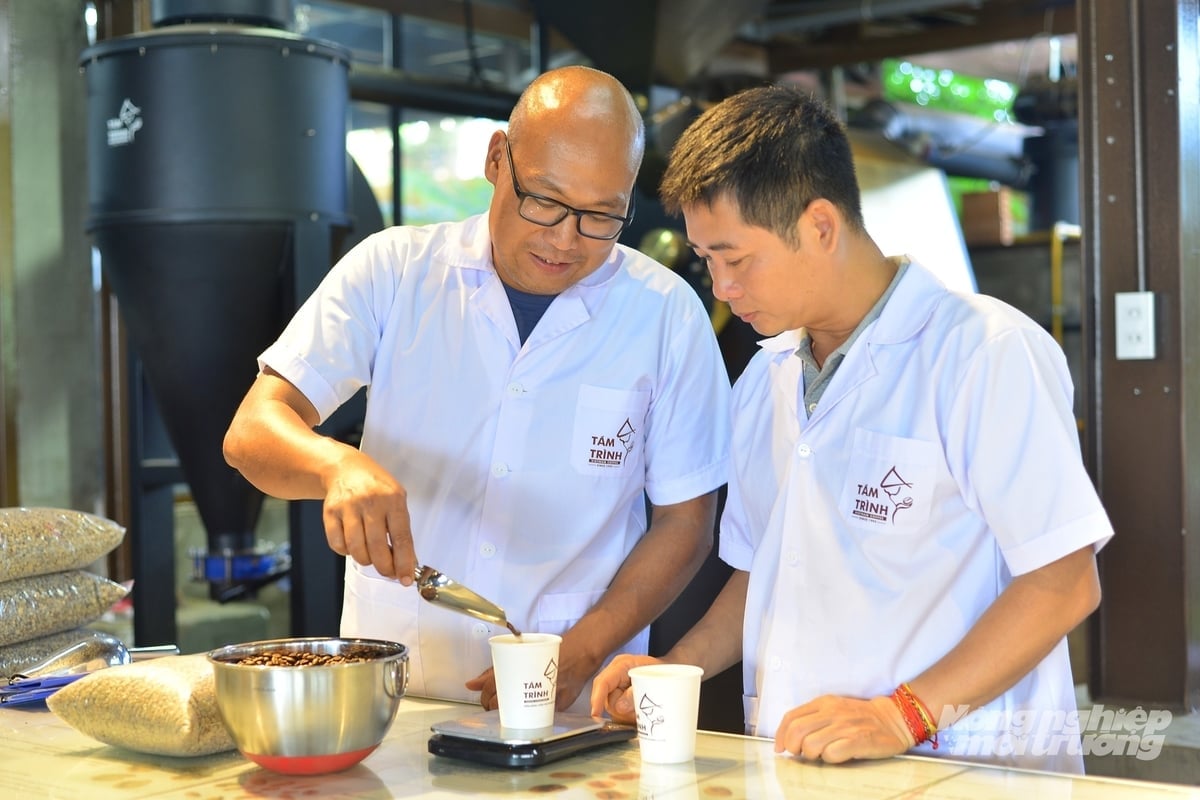
Programs to develop high-quality and specialty coffee have increasingly contributed to enhancing the reputation and position of Vietnamese coffee. Photo: Phuong Chi.
In addition, Vietnam needs to urgently build a national database on growing areas, growing area codes, and closely link businesses and farmers to collect and digitize shipment information and locate gardens; this is a "vital" solution to meet EUDR regulations. Establishing traceability data is also a solution to access markets for high-value quality products.
At the same time, promoting deep processing is the key to increasing the added value of Vietnamese coffee. The State needs to have policies to encourage and attract investment in factories processing instant coffee, roasted coffee, and other high-value extracted products.
Focus on building a national brand for Vietnamese coffee associated with quality, sustainability and cultural stories. In addition to the traditional market, it is necessary to actively exploit niche markets such as the specialty coffee segment, organic coffee...
Dr. Phan Viet Ha: "In the coming time, it is necessary to eliminate fragmented production by promoting cooperative and cooperative group linkage models; creating links between farmers and businesses in order to be able to apply synchronous scientific and technical advances, produce high-quality and stable products, and meet diverse market requirements."
Source: https://nongnghiepmoitruong.vn/nganh-hang-ca-phe-but-pha-d780888.html








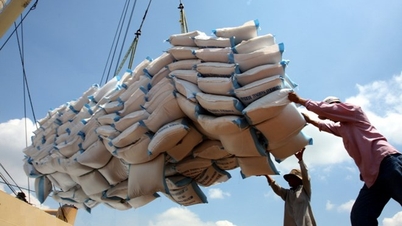



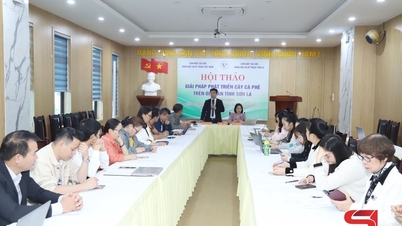











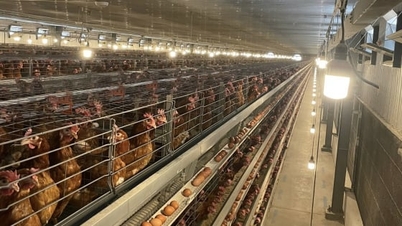







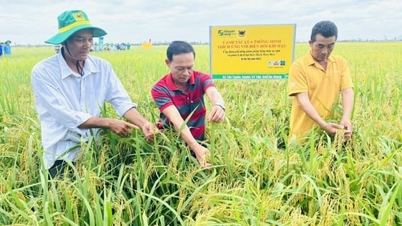

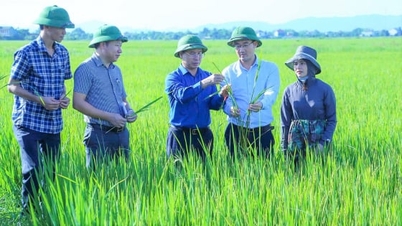










































![[Infographic] Vietnam's stock market exceeds 11 million trading accounts](https://vphoto.vietnam.vn/thumb/402x226/vietnam/resource/IMAGE/2025/11/09/1762677474332_chungkhoanhomnay0-17599399693831269195438.jpeg)
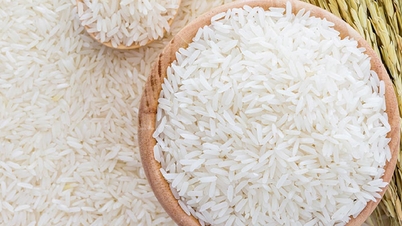






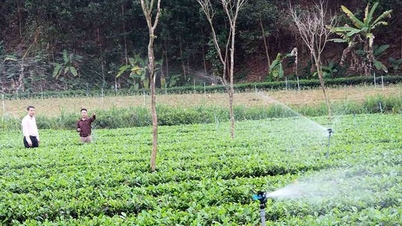










![Dong Nai OCOP transition: [Part 2] Opening new distribution channel](https://vphoto.vietnam.vn/thumb/402x226/vietnam/resource/IMAGE/2025/11/09/1762655780766_4613-anh-1_20240803100041-nongnghiep-154608.jpeg)












Comment (0)